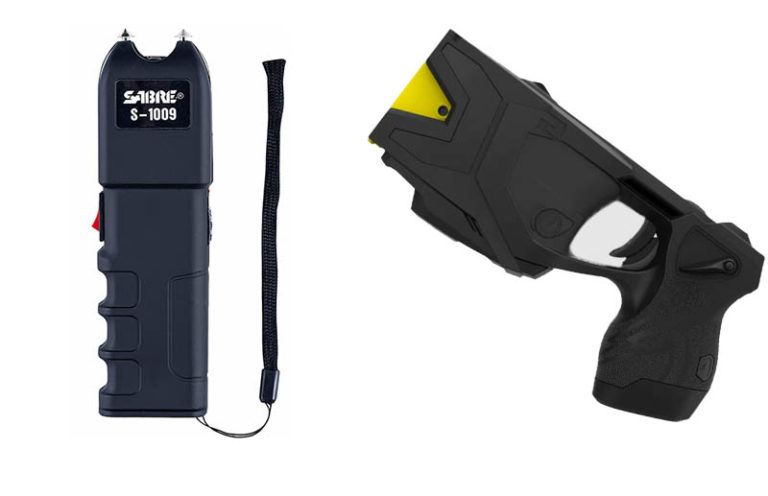
Frankly, the stun gun isn’t an ideal self-defense weapon, but some people may still benefit from carrying one.
Stun guns can, on their face, be effective…but they are one of the least-preferred self-defense tools for good reason.
We’ll go over what those reasons are, and cover some justifications for why one still may choose to carry one and five top stun gun models to consider for those who do.
Stun Guns Vs. Tasers
While the terms are often used to refer to each other, stun guns and tasers are not one and the same. Firstly, while the word taser is now an accepted colloquialism for any similar device, the name is derived from the original manufacturer TASER International and is still a trademarked term by the current manufacturer Axon.
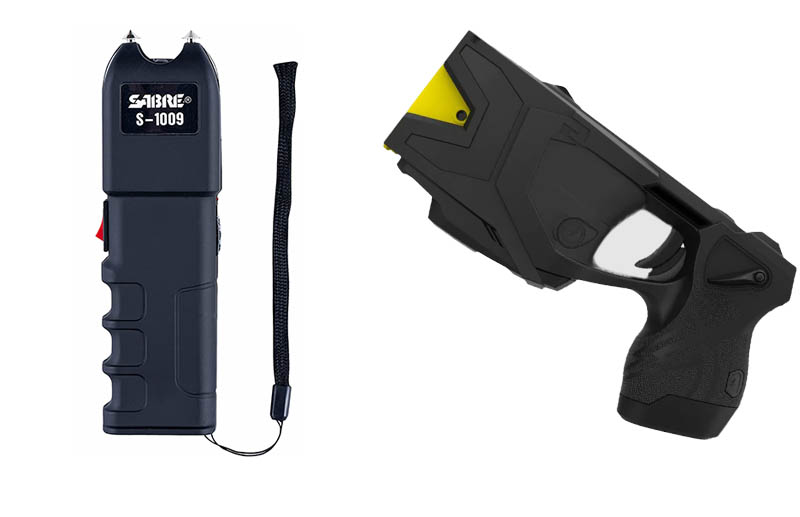
The more important distinction between stun guns and Tasers is how they function. While stun guns impart their electric current to their target via direct contact, Taser devices instead deliver their current at range through two small, wired darts. The darts may be fired at distances up to 15 or 34 feet depending on the model, and if both electrodes make good contact with their target, the circuit will be completed and the subject will be shocked.
Regardless of the style of device that provided it, electric shocks hurt. The only trick is reliably delivering the charge.
Stun guns, and for that matter Tasers, are legal in most states, but there are some restrictions. For example, Wisconsin requires a permit to carry one, Hawaii prohibits carrying them at all and several individual counties and cities have enacted stun gun bans…though legal challenges to them usually prove successful.
Types Of Stun Guns
Generally speaking, stun guns can be broken down into two categories: batons and compacts.
Batons are too large to conceal and deliver electric shock either by electrodes at the end of the device (like a cattle prod) or by wired contact strips, pads or rings along the outside of the shaft.
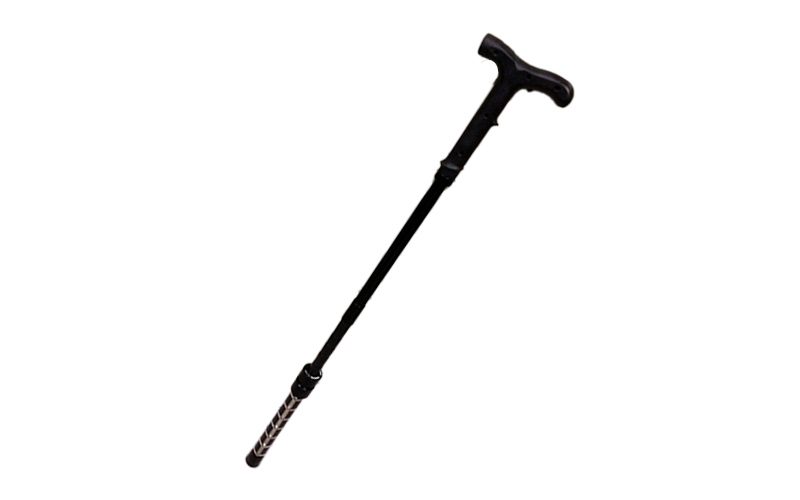
Compact stun guns are handheld, with two electrodes at one end of the device. When you activate the device, the current jumps between them, completing the circuit. They can be made to resemble many different objects such as phones, vapes or flashlights, but some are the classic stun gun design that you probably picture in your head.

Regardless, all stun guns fundamentally work the same way. They create a current which can be applied directly to an attacker.
Why You're Better Off With Pepper Spray
In terms of less-lethal self-defense tools, the default is and should be pepper spray. It has the best track record (good pepper spray works very well when correctly deployed), and it's also cheap and easy to conceal and carry.
Taser devices have a high failure rate in the field (upwards of 50 percent according to some studies) and good ones are usually not cheap.
One major drawback is that stun guns are less than ideal for self-defense because they require the user to maintain direct physical contact with the threat long enough for them to be successfully incapacitated or dissuaded.
That may not be possible, depending on the exact fight you get into. If they're on top of you (almost all fights eventually go to the ground) it's most likely only going to delay harm rather than end the engagement. Heavy clothing can interfere with getting the necessary contact to deliver an electric shock as well.
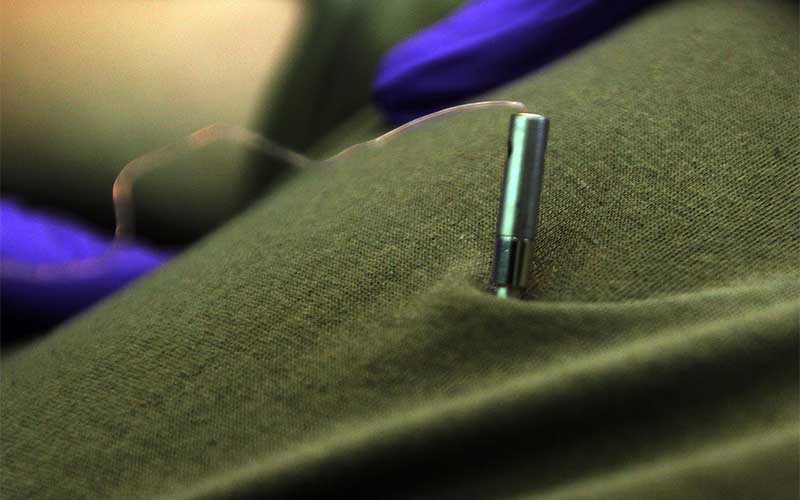
Secondly, unless you're zapping someone in the eyeballs…you're only affecting a muscle group for a second or two. That may not be enough to stop a fight when it comes to some attackers, and OC spray is known to do so much more reliably.
Finally, stun guns rarely put out enough amperage to produce serious-enough muscle spasms to be unfailingly effective. If they did, they'd likely be treated the same as firearms under the law.
To help better understand that, consider the classic analogy that compares voltage to water pressure but amperage to water volume or flow rate. An ounce of water at incredible pressure is still only an ounce of water, but four gallons per minute is a lot of water to move regardless of the pressure.
This is why humans can withstand thousands and thousands of volts with nearly no effect. It's the amperage that does the damage.
Humans generally need to be subjected to 5 to 10 milliamps to even register pain. Inducing mild muscular reactions can require 10mA to 30mA. Defibrillators, by contrast, typically have an output of around 45mA or more.
The batteries aren't the problem. AA batteries have around 2,800mAH (milliamp hours; 1 milliamp per hour for 2,800 hours) of charge, and a 3.7-volt 18650 battery has about 3,400mAH.
To be a reliable fight stopper, you'd need to deliver enough amperage to guarantee muscle seizure, which can require anywhere from 50mA to 150mA…but the problem there is that even 100mA (0.1 amp) can be fatal.
So, an inherent flaw in stun guns is that they can't be made powerful enough to be reliably effective while remaining a non-lethal tool. An Axon-brand X26 TASER (a common model issued to police) has an output of 2.1mA.
With so many downsides, you may be starting to gather that stun guns are a limited tool. But is there a possible niche?
When Would A Stun Gun Be Practical?
On paper, the stun gun is not an entirely useless defensive tool. Providing that yours has sufficient enough amperage (with fresh batteries) to actually induce not only pain but mild muscular contraction, a stun gun could (in theory) be an effective contact weapon.
Knives are not less-lethal tools. Bludgeons of any kind such as batons or saps are not either…and any “pressure point” pokey thing is unlikely to do much in a real fight.
In other words, where a stun gun could be tenable is in a fight or attack where you are in contact with your assailant. Pepper spray requires distance—at arms' length, it's possible to spray yourself as much as your opponent.

Since an obvious concern for women, the elderly and the physically disabled is winding up on the ground under an assailant, a stun gun gives you a weapon that isn't potentially lethal (response to force must be proportional, after all) but can potentially distract or dissuade someone enough to flee.
It shouldn't be your Plan A, but it could still be a potentially useful tool to have as a backup, especially for those who want a less-lethal option but lack the physical constitution to fight off an attacker.
At that, here are some of the best stun gun models on the market that may actually be worth considering.
Top 5 Stun Gun Options:
The Runt Stun Gun
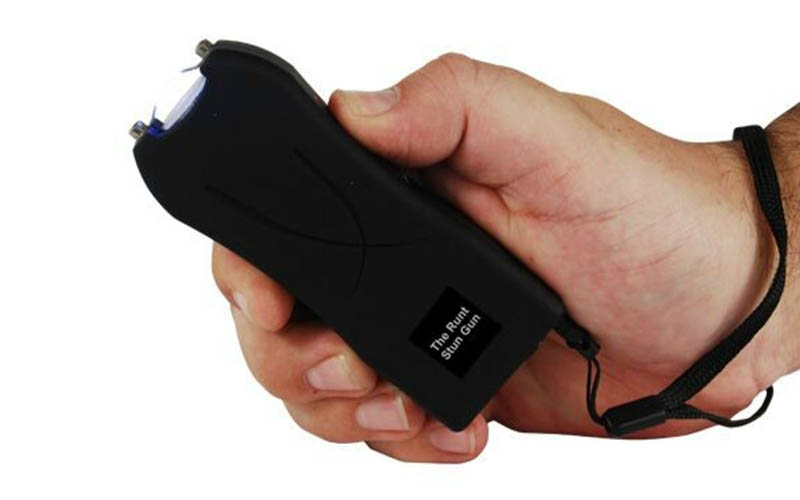
The Runt has been on the market for some time, and it has some features that indicate it may be one of the few stun guns that will actually work. It's a compact unit, with an output of 4.5mA on a full battery. The onboard battery pack is rechargeable. You unlock the charge prongs and plug them directly into a wall socket.
The Runt has a rubber housing, and is 4.25 inches long, 1.63 inches wide and 1-inch thick, and at less than 1.5 ounces can be easily carried in a pocket or worn in the included belt holster. They cost less than $20.
TASER Professional

If you're seriously contemplating an electrical weapon…why mess around? Axon's TASER brand is now selling to the public, and their Professional Series, including the X2 and TASER 7 CQ which are the same units sold to police.
The output is just under 4mA, and the X2 and 7 CQ models have a warning arc that could be used at contact distance…or you can fire the cartridges.
However, a professional grade comes with professional pricing. The X1 is the cheapest…at $999. The X2 is $1,499, and the TASER 7 CQ is $1,599.
SABRE Red Self-Defense Kit
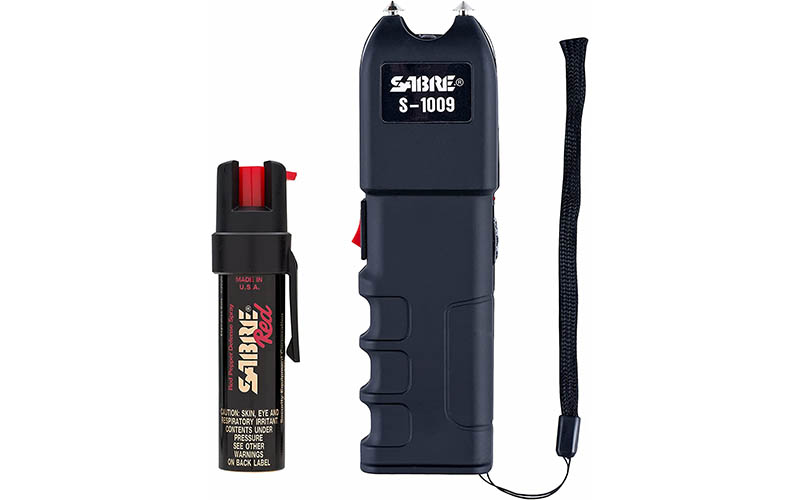
The SABRE Red Self-Defense Kit includes pepper spray and the SABRE S-1009 stun gun, which emits 1.250 micro coulombs per burst, enough to likely induce pain compliance.
Why this kit? Because you can get the stun gun and SABRE Red spray for about $25. That way, you get some good OC spray out of the deal too.
Guard Dog Katana Stun Gun Flashlight
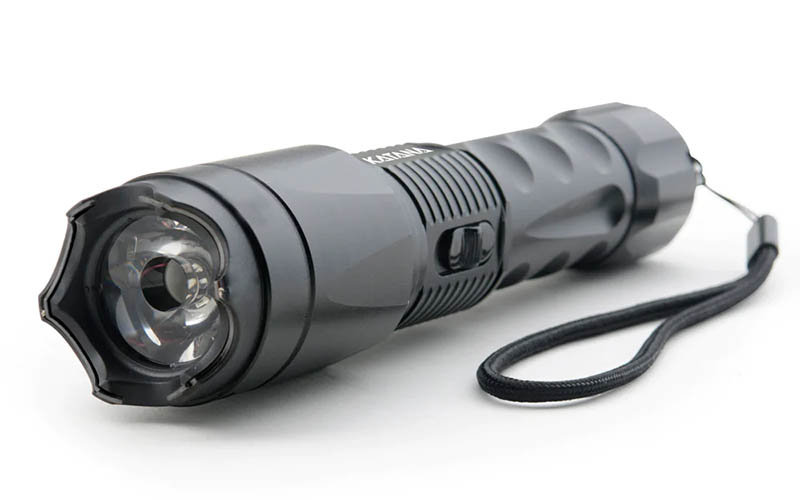
The Guard Dog Katana is a flashlight stun gun. It has a strike bezel on the bulb housing with concealed electrodes; when you activate it, they create an arc.
It has a rechargeable battery, an output of 420 lumens and an aluminum housing with a glass breaker tail cap.
Why this flashlight stun gun? It's about the same size as most other tactical flashlights, so it's slim enough to carry every day. If the electric shock doesn't work, it's also a good impact weapon. If nothing else, you’ll at least have a flashlight.
Vipertek VTS 989
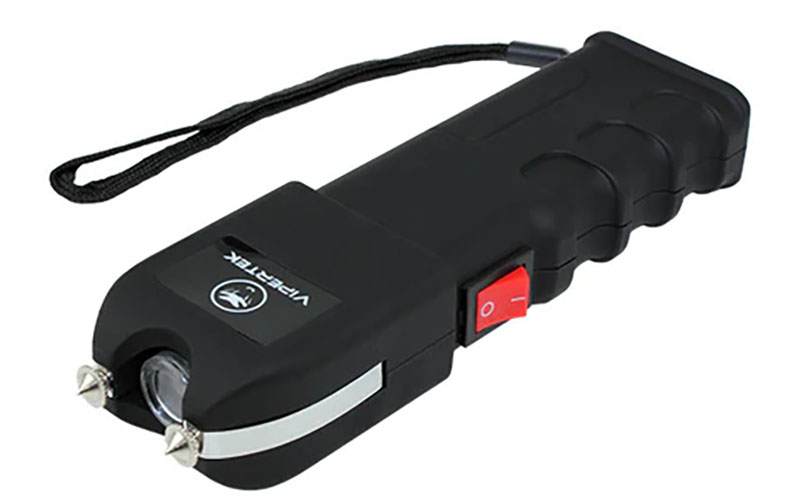
The Vipertek VTS 989 has been on the market for quite some time and has a very similar design to the Runt. Its output is over 1 microcoulomb, and it includes an LED light that activates with the eclectic current.
The onboard battery is rechargeable, and it comes with a wrist strap and belt holster. It's rather large for pocket carry at 6.5 inches long, 2 inches wide and 1-inch thick, but should still fit most pockets. These also typically sell for less than $25.
More Self-Defense Info:
- Brandishing And When You Can Legally Display A Gun
- Carry Law: What Is A Righteous Shooting?
- Concealed Carry and the Right to Remain Silent
- Tips For Communicating With Police After Shootings
- Concealed Carry: After the Shooting
- Q&A: Massad Ayoob On Self-Defense In 2020 America

Next Step: Get your FREE Printable Target Pack
Enhance your shooting precision with our 62 MOA Targets, perfect for rifles and handguns. Crafted in collaboration with Storm Tactical for accuracy and versatility.
Subscribe to the Gun Digest email newsletter and get your downloadable target pack sent straight to your inbox. Stay updated with the latest firearms info in the industry.

![Best Concealed Carry Guns In 2025 [Field Tested] Wilson Combat EDC X9S 1](https://gundigest.com/wp-content/uploads/Wilson-Combat-EDC-X9S-1-324x160.jpg)


![Best 9mm Carbine: Affordable PCCs [Tested] Ruger Carbine Shooting](https://gundigest.com/wp-content/uploads/Ruger-Carbine-Shooting-100x70.jpg)
![Best AR-15: Top Options Available Today [Field Tested] Harrington and Richardson PSA XM177E2 feature](https://gundigest.com/wp-content/uploads/Harrington-and-Richardson-PSA-XM177E2-feature-100x70.jpg)
